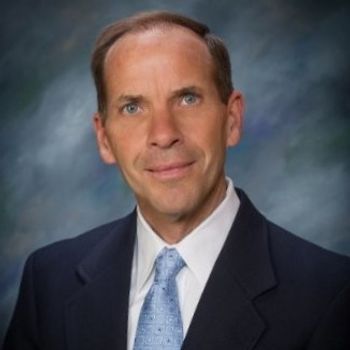
Court rules against HHS restructuring; federal research going public; RFK Jr. cutting science subscriptions
Key Takeaways
- A court ruling has paused HHS's reorganization plan, which included reducing staff and consolidating divisions, due to legal challenges from 20 states.
- NIH has expedited its Public Access Policy, allowing quicker public access to NIH-funded research, aiming to boost transparency and public trust.
Actions this week affect federal health care leader HHS staff and data.
Reorganizing the U.S. Department of Health and Human Services — including
Meanwhile, a change in policy will lead to more
Reorganizing HHS — or gutting it?
The developments came to light this week with announcements about medical research and with a court ruling in the case filed by 20 state attorneys general to stop changes ordered by HHS Scretary Robert F. Kennedy, Jr.
The reorganization plan “left HHS unable to carry out many of its most vital functions,” said a July 1
She announced the decision to grant a preliminary injunction stopping the administration’s layoff at HHS divisions responsible for Head Start, the World Trade Center Health Program, infectious disease monitoring, and federal poverty guideline calculations.
“HHS is the backbone of our nation’s public health and social safety net — from cancer screenings and maternal health to early childhood education and domestic violence prevention,” James said in a news release.
The court order “guarantees these programs and services will remain accessible and halts the administration’s attempt to sabotage our nation’s health care system,” James said. “My office will continue fighting to stop this unlawful dismantling and defend the essential services that protect our most vulnerable communities.”
‘Realigning the organization’
The ruling stopped any actions to implement a reduction in force
“We aren't just reducing bureaucratic sprawl. We are realigning the organization with its core mission and our new priorities in reversing the chronic disease epidemic,” Kennedy said in the announcement. “This department will do more — a lot more — at a lower cost to the taxpayer.”
States fire back
On May 5, the states filed the lawsuit claiming HHS’ mass layoffs and reorganization were unlawful for at least five ways, per the U.S. Constitution and federal law.
The court ruling did not issue a final ruling on all the states’ claims. But U.S. District Court of Rhode Island Judge Melissa R. DuBose agreed the HHS actions hurt the department’s relationship with the states. HHS was barred from executing the reduction in force and must report back to the court by July 11 to explain how HHS leaders are complying with the order.
HHS will continue with plans, according to a news report.
“We stand by our original decision to realign this organization with its core mission and refocus a sprawling bureaucracy that, over time, had become wasteful, inefficient, and resistant to change,” an HHS spokesperson told
Along with New York, the other states involved are: Arizona, California, Colorado, Connecticut, Delaware, Hawaii, Illinois, Maine, Michigan, Maryland, Minnesota, New Jersey, New Mexico, Oregon, Rhode Island, Vermont, Washington, Wisconsin, and the District of Columbia.
Open research and findings
Apart from the court case, this week NIH Director Jay Bhattacharya, MD, PhD, announced a quicker start for a policy “to make NIH research finding freely and quickly available to the public.” The 2024 Public Access Policy scheduled to start Dec. 31 was moved up to July 1.
“To be clear, maximum transparency regarding the research we support is our default position,” Bhattacharya wrote.
Starting with the policy in 2008, more than 1.5 million articles reporting NIH-supported research are available free through PubMed Central. This year, NIH lifted a 12-month embargo on articles so researchers, students and the public gain quicker access.
“NIH is the crown jewel of the American biomedical research system,” Bhattacharya wrote. “However, a recent
“Providing speedy public access to NIH-funded results is just one of the ways we are working to earn back the trust of the American people,” Bhattacharya wrote. “Trust in science is an essential element in Making America Healthy Again. As such, NIH and its research partners will continue to promote maximum transparency in all that we do.”
NIH has a budget of approximately $47.7 billion, with nearly 82% of that covering up to 50,000 competitive grants to more than 300,000 researchers at more than 2,500 universities, medical schools and other research institutions. NIH uses about 11% of its budget to support projects of its own pool of almost 6,000 scientists generally around its campus in Bethesda, Maryland. They operate with
Bhattacharya’s official biography noted the Stanford University-trained physician and economist “is a longtime NIH grantee and has served as a standing member of multiple NIH review committees.”
Publication credibility
Meanwhile, it appeared the HHS leader’s war of words with medical publishers continued this week with the administration cutting subscriptions to Springer Nature, publisher of Nature and more than 3,000 other journals. The U.S. Departments of Agriculture (USDA) and Energy (DOE) in June cut their contracts with Springer Nature, with a USDA spokesperson calling Nature “exorbitantly expensive” and “not a good use of taxpayer funds.”
The Nature report said the USASpending.gov database showed federal contracts worth more than $20 million to Springer Nature this year.
Earlier this year, The Washington Post reported Kennedy called out The New England Journal of Medicine, JAMA and The Lancet for being corrupt due to control by pharmaceutical companies. Instead of publishing in those venues, Kennedy suggested the NIH researchers would publish in an in-house publication due to their status of being funded by the government. There was no clear schedule for creation of an in-house publication.
Newsletter
Stay informed and empowered with Medical Economics enewsletter, delivering expert insights, financial strategies, practice management tips and technology trends — tailored for today’s physicians.















